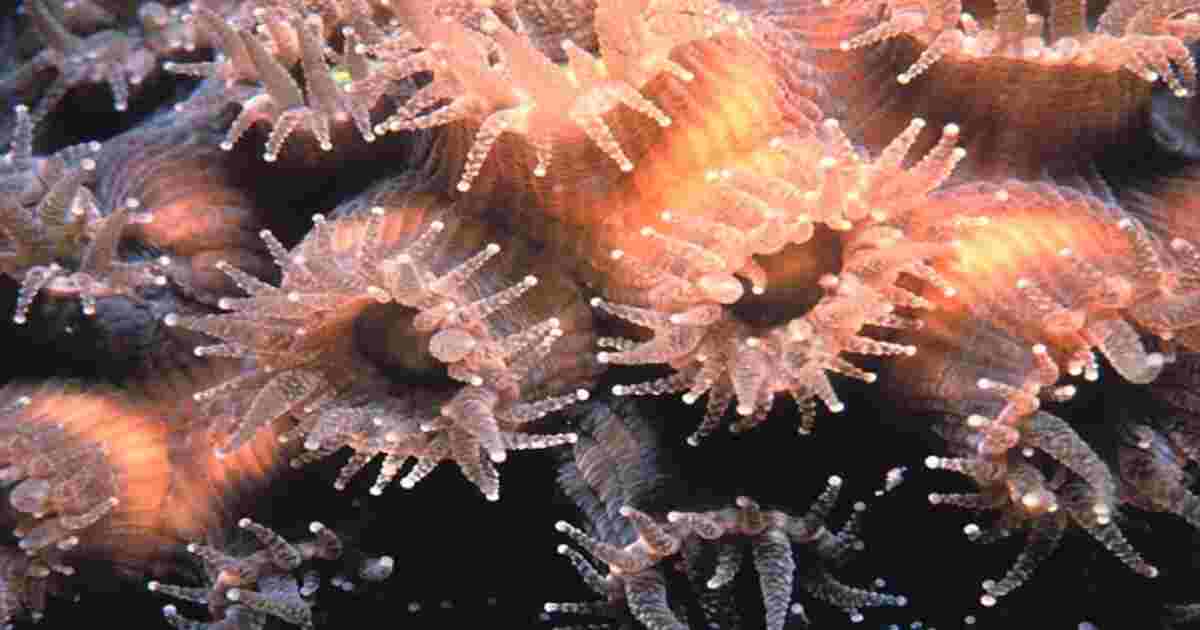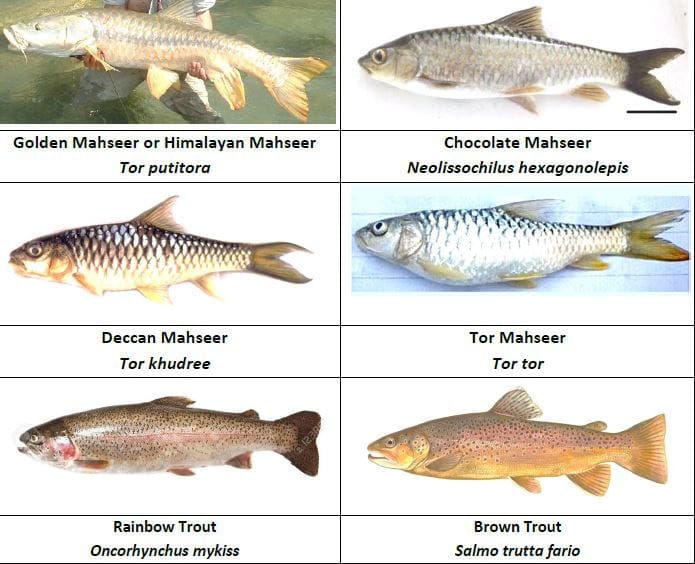Reservoirs of Maharashtra: Maharashtra state is the third largest State of the Indian rank in geographical area and second position in population. It is surrounded by the Arabian Sea in the West, Gujarat in the northwest Karnataka in the south, Andhra Pradesh in the southeast and Madhya Pradesh in the north.
The Maharashtra state has three geographical regions, viz., the Western Ghats, eastern plateau and coastal belt (Konkan). Maharashtra boasts a vast expanse of freshwater bodies, including rivers, lakes, and ponds. Reservoirs, being in the tropical climate zone, exhibit high primary productivity, making them capable of producing a significant amount of fish. However, the current average fish production in Indian reservoirs stands at a modest 29.7 kg/ha/yr, indicating the untapped potential of these water bodies. By understanding the unique characteristics and opportunities presented by reservoirs, Maharashtra can harness their power to enhance fisheries and contribute to food security. In this article, we will explore the significance of reservoirs in Maharashtra, their potential for fisheries, and the overall impact they have on the region’s aquatic ecosystem.
Status of Reservoirs in Maharashtra
While the State Fisheries Department of Maharashtra does not maintain an exhaustive list of reservoirs, it does possess valuable information on various categories of water bodies based on their size. Let us explore into the details-
Small Reservoirs (<1,000 ha)
The small reservoirs in Maharashtra, covering an area of 119,515 ha, account for 44% of the total water body area of 273,750 ha. These reservoirs serve as vital habitats for various fish species, contributing to the overall biodiversity of the region. The State Fisheries Department should focus on promoting sustainable fishing practices and conservation efforts in these smaller reservoirs to maximize their potential.

Medium Reservoirs (1,000 to 5,000 ha)
The medium-sized reservoirs, occupying 39,181 ha, form a significant portion of Maharashtra’s water bodies. With proper management and scientific interventions, these reservoirs can support increased fish production and create additional livelihood opportunities for local communities. The State Fisheries Department should consider implementing initiatives to enhance the productivity and sustainability of fisheries in these reservoirs.
Large Reservoirs (>5,000 ha)
Maharashtra is also home to several large reservoirs covering an extensive area of 115,054 ha. These reservoirs hold immense potential for fisheries development and can significantly contribute to the overall fish production of the state. It is crucial to prioritize conservation measures, sustainable fishing practices, and infrastructure development in these larger reservoirs to harness their capacity to the fullest.
Area under different categories of reservoirs in Maharashtra
| Category | Area at FRL (Ha) |
| <1000 ha | 119 515 |
| 1 000–5 000 ha | 39 181 |
| >5 000 ha | 115 054 |
| Total | 273 750 |
Major Reservoirs of Maharashtra
Name of the reservoir | Area at FRL (ha) | Name of the river |
| Jayakwadi | 39 777 | Godavari |
| Ujjaini | 29 000 | Bhima |
| Shivsagar | 11 216 | Bhagwati |
| Yeldari | 9 472 | Purna |
| Darna | 7500 | Darna |
| Itiadoh | 7345 | Gadhvi |
| Girna | 5420 | Girna |
| Mula | 5324 | Mula |
| Erai | 4250 | Erai |
| Sidheswar | 3360 | Purna |
| Ghod | 3200 | Ghod |
| Pench | 2791 | Pench |
| Bhatghar | 2800 | Yelwandi |
| Manar | 2640 | Manar |
| Chankapur | 2635 | Girna |
| Gangapur | 2400 | Godavari |
| Pawana | 2360 | Pawana |
| Dhom | 2306 | Krishna |
| Bhandardara | 1822 | Pravara |
| Laxmi | 1813 | Bhagawati |
| Khadakwasla | 1472 | Muthai |
| Katepurna | 1350 | Katepurna |
| Bor | 1334 | Bor |
| Panset | 1252 | Mishi |
| Pus | 1075 | Pus |
| Saikheda | 960 | Khani |
| Chandani | 815 | Chandani |
| Wana | 677 | Wana |
| Waghada | 454 | Kolwar |
| Morna | 430 | Morna |
| Harani | 402 | Harani |
| Galhati | 343 | Galhati |
| Mekhari | 221 | Mekhari |
Benefits of Reservoir
1. Irrigation
One of the primary purposes of Maharashtra’s reservoirs is irrigation. The stored water is utilized for agricultural activities, supporting farmers and enhancing crop productivity. Reservoir-based irrigation systems have played a pivotal role in transforming arid regions into fertile agricultural lands, there by ensuring food security and economic prosperity.
2. Hydroelectric Power Generation
Several reservoirs in Maharashtra serve as significant sources of hydroelectric power. The stored water is utilized to generate electricity, catering to the energy needs of both rural and urban areas. This clean and renewable source of power reduces dependency on fossil fuels, mitigates environmental impact, and contributes to sustainable development.
3. Drinking Water Supply
Reservoirs also play a vital role in providing potable water to the growing population of Maharashtra. With rapid urbanization and increased water demand, these water bodies ensure a reliable supply of drinking water to both rural and urban communities. The proper management and maintenance of reservoirs are essential to meet the state’s water requirements.
4. Tourism and Recreation
Many of Maharashtra’s reservoirs offer scenic beauty and recreational opportunities, attracting tourists and nature enthusiasts. These water bodies provide a serene environment for activities such as boating, fishing, and picnicking. The tourism potential of these reservoirs boosts local economies, generates employment, and promotes sustainable tourism practices.
Expanding Fisheries of Reservoirs
To tap into the full potential of reservoirs in Maharashtra, it is essential to adopt a holistic approach that combines scientific knowledge, sustainable practices, and community engagement. Here are some key strategies to consider:
Stocking Programs
Implementing effective stocking programs is crucial to replenish fish populations and maintain ecological balance in reservoirs. The State Fisheries Department should focus on identifying suitable fish species that thrive in the local ecosystem and promote their stocking in reservoirs, ensuring the preservation of native species while introducing economically important fish varieties.
Research and Development
Investing in research and development activities specific to reservoir fisheries can yield valuable insights and innovative techniques. This includes studying fish behavior, optimizing feeding practices, and exploring new breeding methods. Collaborative efforts between research institutions, the government, and local
stakeholders can facilitate knowledge transfer and foster continuous improvement in reservoir fisheries management.
Infrastructure Development
Enhancing the infrastructure surrounding reservoirs plays a vital role in supporting the growth of fisheries. Adequate transportation facilities, storage units, and processing centers are essential to streamline the fish supply chain and ensure the efficient distribution of fish products to markets. The State Fisheries Department should collaborate with relevant agencies to develop and maintain essential infrastructure in and around reservoirs.
Training and Capacity Building
Promoting training and capacity building programs among fisherfolk is crucial for sustainable fisheries management. By providing education and guidance on modern fishing techniques, habitat conservation, and resource utilization, the State Fisheries Department can empower local communities to engage in responsible fishing practices, leading to improved fish yields and long-term ecological sustainability.
Conclusion
Reservoirs in Maharashtra represent a valuable natural resource with immense potential for fisheries development. By harnessing the opportunities presented by these water bodies, Maharashtra can significantly contribute to the overall fish production of the country, ensure food security, and create livelihood opportunities for its residents. Through strategic planning, sustainable practices, and collaborative efforts, the State Fisheries Department can maximize the productivity and conservation of reservoir fisheries, paving the way for a prosperous and sustainable future.
FAQs
Q: How many reservoirs are there in Maharashtra?
A: Maharashtra is home to numerous reservoirs, with the exact count varying based on size and other factors.
Q: Are Maharashtra’s reservoirs open to the public for recreational activities?
A: Yes, many reservoirs in Maharashtra offer recreational opportunities such as boating and fishing.
Q: Are Maharashtra’s reservoirs important for wildlife conservation?
A: Reservoirs provide habitats for various aquatic species, contributing to the overall biodiversity of the
region.
Q: How do reservoirs benefit the agricultural sector in Maharashtra?
A: Reservoirs ensure a reliable water supply for irrigation, enhancing crop productivity and supporting farmers.
Q: Are Maharashtra’s reservoirs adequately managed for water conservation?
A: The State Water Resources Department and other relevant authorities are responsible for managing and
maintaining reservoirs to ensure water conservation.
Q: Can reservoirs help in flood control in Maharashtra?
A: Yes, well-managed reservoirs can help regulate water flow, reducing the risk of flooding during heavy rainfall.





